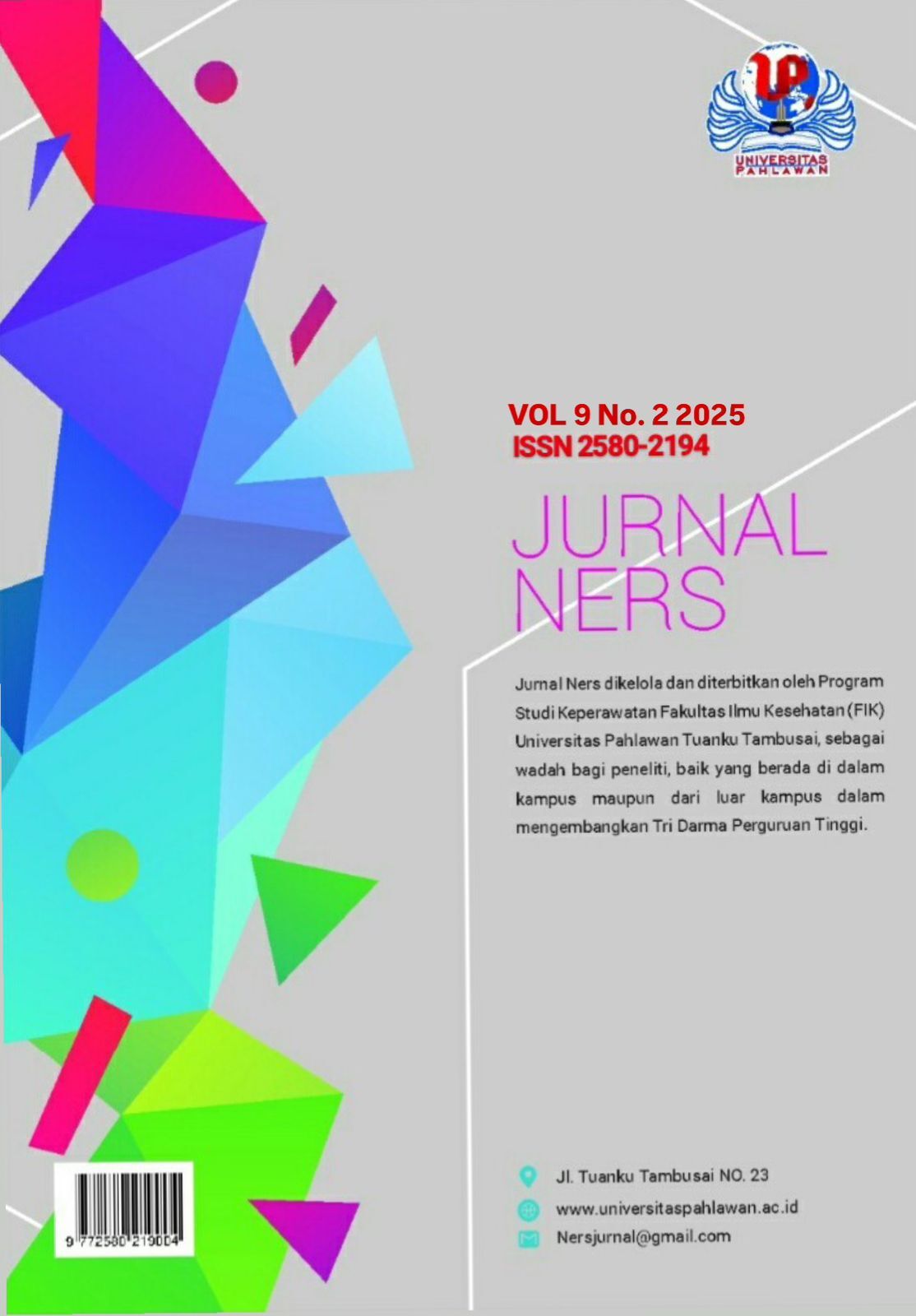Gambaran Mobilisasi Aktif Pada Pasien Post Sectio Caesar di Ruang Perawatan dan Observasi RSUD Wamena Jayawijaya Tahun 2024
DOI:
https://doi.org/10.31004/jn.v9i2.42845Abstract
Post-Caesarean section patients generally experience limited mobility due to pain and fear of the condition of the post-operative wound. However, it is very important to carry out active mobilization as early as possible because it can help reduce pain, speed up the healing process, and prevent complications that may arise due to immobilization. Thus, education and support for patients to mobilize in stages needs to be considered in order to improve post-operative recovery. This research is descriptive qualitative and the Normality Test used, namely Shapiro-Wilk, was taken from medical record data of mothers who gave birth by caesarean section. The research results show that the majority of respondents are aged 26-30 years, with the 2nd parity being the largest group. Most patients began active mobilization on the 2nd postoperative day (60%), and 90% of them were successful. All respondents (100%) felt the effectiveness and positive impact of active mobilization, which helped reduce pain, speed up recovery, and prevent complications due to immobilization.Downloads
Published
2025-03-13
How to Cite
Hutagalung, S. R., & Tridiyawati, F. (2025). Gambaran Mobilisasi Aktif Pada Pasien Post Sectio Caesar di Ruang Perawatan dan Observasi RSUD Wamena Jayawijaya Tahun 2024. Jurnal Ners, 9(2), 2309–2312. https://doi.org/10.31004/jn.v9i2.42845
Issue
Section
Articles
License
Copyright (c) 2025 Jurnal Ners

This work is licensed under a Creative Commons Attribution-ShareAlike 4.0 International License.
Authors who publish with this journal agree to the following terms: Authors retain copyright and grant the journal right of first publication with the work simultaneously licensed under a Creative Commons Attribution-ShareAlike 4.0 International License that allows others to share the work with an acknowledgement of the works authorship and initial publication in this journal. Authors are able to enter into separate, additional contractual arrangements for the non-exclusive distribution of the journals published version of the work (e.g., post it to an institutional repository or publish it in a book), with an acknowledgement of its initial publication in this journal. Authors are permitted and encouraged to post their work online (e.g., in institutional repositories or on their website) prior to and during the submission process, as it can lead to productive exchanges, as well as earlier and greater citation of published work (See The Effect of Open Access).








